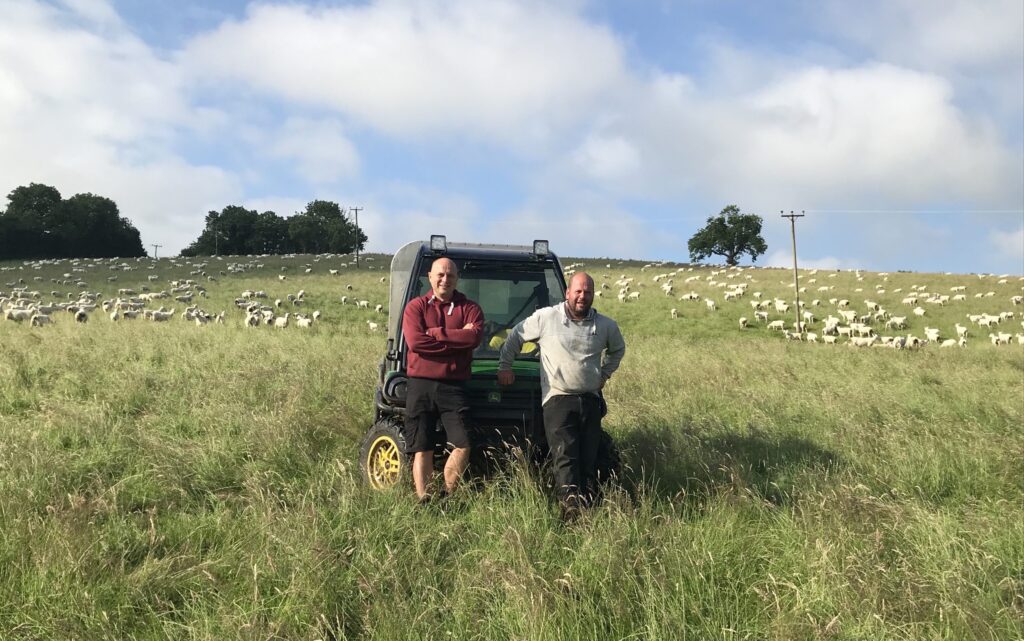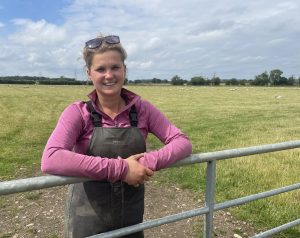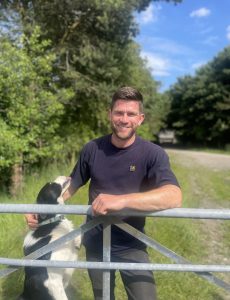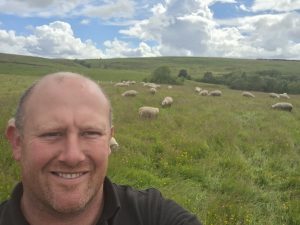with thanks to Gareth Beynon of Rampisham and Cobham Estates, Dorset
Sheep are playing a significant role in Rampisham and Cobham Estate’s new adopted profit driven regenerative farming strategy. Within the last three years, the flock has been expanded by 66% to 3,000 ewes underpinned by Innovis genetics to enable Dorset based farm manager, Gareth Beynon to successfully introduce high-density mob grazing.
“To summarise, our low input strategy with the entire flock managed by myself and our shepherd, Lee Taylor features April outdoor lambing and set stocking four to five ewes per acre in paddocks ranging from five to 25 acres. Following on, ewes and lambs are introduced in mobs of up to 500 ewes and lambs to handle taller grass grazing over a few days, leaving plenty of cover behind. The aim is three days grazing with 30 days rest when possible to enable better root structure development and boost both pasture resilience and soil health,” he explains. “However, decision making is influenced by growth rates and results from FEC monitoring.”
Introducing compatible genetics was vital to the system’s success. “Our original Mule flock wasn’t suited to a grazing system – the ewes were unable to retain themselves in body condition score 3, so we subsequently swapped them for Lleyn cross ewes and then went on to introduce Innovis performance recorded genetics which are specifically bred for forage based systems. We initially introduced the Aberfield maternal line and found these ewes require minimal inputs and are able to look after themselves. We’ve since gone on to add the Abermax meat sire.
“Whilst our Aberfield sired ewe lambs surplus to requirements are selling for replacement purposes and offering a new additional income stream, the remaining Aberfield cross wethers together with the Abermax cross lambs are finishing off a forage based system featuring deep rooting GS4 leys, red clover, chicory and various herbal leys, turnips all worked in to four to five-year arable rotation. Last season 10% of lambs finished to target deadweight by 12-week weaning whilst the entire crop finished by December to average 18.8kg with majority within spec. We achieved 155% lambs reared, close to our 160% target.”
Gareth manages the 4,000-acre estate over two sites which include 1,500 acres grassland with some areas of improved ground, herbal leys, very old permanent pasture together with 1,700 acres arable over two arable share farm agreements. Together with estate owner, Robert Boileau, he agreed to introduce longer term changes to make the system more resilient following the 2018 drought and warnings of drier summers to follow.
“We thought we were on track combining set stocking with rotational grazing until that extreme season exposed weaknesses to the system, and we decided the solution towards mitigating future burnt up grassland was to take a regenerative approach and swap the system for mob grazing. The measures we agreed included introducing a regenerative system with accompanying land improvement, taking arable in hand and increasing ewe numbers,” he explained.
Soil sampling and correcting the pH balance, along with measuring soil organic matter were also amongst the priorities of developing a regenerative system. The estate has also introduced new flexibility, for example the ewes are shipped to a neighbouring dairy unit on winter tack before returning to the home unit in January. The ewes are then split according to scan results to go onto bale grazing, turnips or cleaning up rough grass until March before moving on to the lambing paddocks.
“Whilst I have accepted regenerative farming is a long-term journey, permanent pasture is already improving, nowadays fertiliser is only applied to first cut for haylage, and whilst our grassland is already noticeably greener, even in a dry spell we now have grass.”



